Guest Author
This account is reserved for our Guest Authors and Collaborators.
MORE ABOUT THIS AUTHOR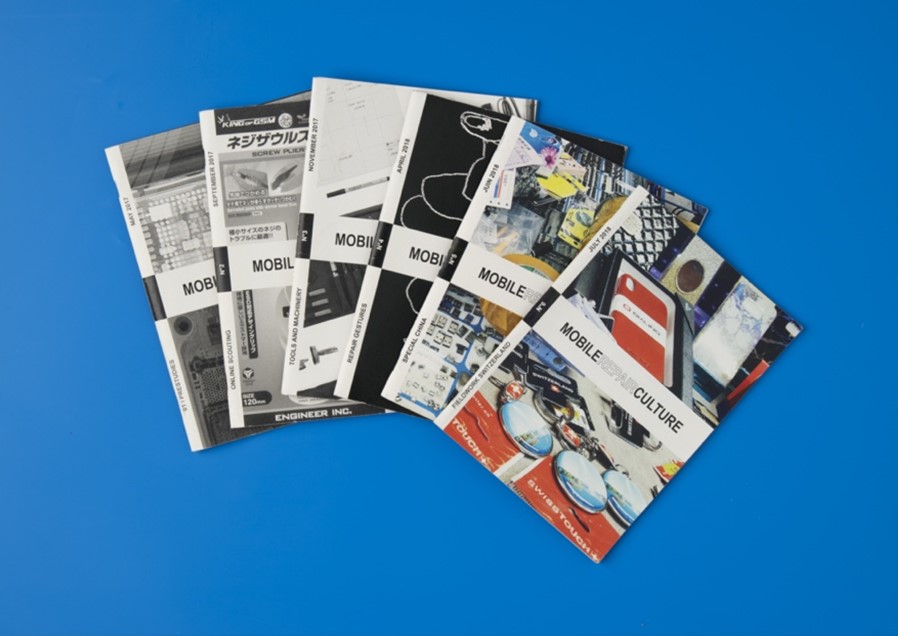
The following text was written by Anaïs Bloch, researcher at the Geneva University of Art and Design, and reflects her presentation at our Closing Conference, “Repairing Technology – Fixing Society?” from 13-14 October 2022 in Luxemburg.
For the past fifteen years, anthropologists have taken an increasing interest in the practice of drawing. One only needs to observe the growing body of academic literature addressing the role of drawing or photography in research (Tondeur 2018). The emergence of new forms of writing in academic fields implicitly raises questions about the forms of publication that this new type of material can take – but these have so far not been widely explored in the literature. My approach as a researcher relies on qualitative research methods that I enrich and mix with visual methods and sketches put together in the form of printed objects. My critical thinking develops while making things – a form of intellectual translation into visual forms. During my presentation, I will address the potential of the publishing and distribution of a research magazine – namely a fanzine – as a singular and fertile research tool. I will discuss the interest that lies in the juxtaposition of text, image and drawing in the same object to produce new narrative forms, while incorporating different writing modalities. In order to examine the contribution of this technographic approach (Nova/Joulian 2019), I will review a series of research fanzines compiled alongside ethnographic investigations, hoping to suggest some directions that could be used in future experiments.
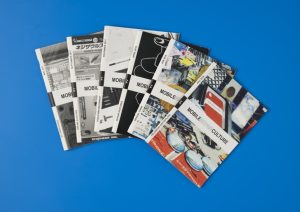
Series of fanzines developed as part of the Mobile Repair Culture project, HEAD – Genève, HES-SO, 2017-2019.
Before going any further it seems important to describe what a fanzine is. According to Wikipedia, a fanzine (fan + zine – short for magazine) is a small-circulation self-published work generally circulated within counter-culture movements. Historically, fanzines first emerged in marginalized communities, allowing them to give voice to their messages and perspectives by producing micropublications, often with the means at hand. In the field of repair and maintenance studies, different modes of writing have not previously been widely explored. Because they are developed from below (Edgerton 2013), fanzines can address and reach places, practices and do-it-yourself communities with a form of restitution that corresponds to the phenomenon (the repair practices) itself. Although bringing zines into academia may seem an unusual idea, this type of publication has the potential to question conventional modes of writing. As Stephen J. Jackson demonstrates, maintenance, repair and refurbishment are “a vital source of variation, improvisation, and innovation” (Jackson 2014). The small-scale changes made in repair can be a trigger for innovation, “acting as a continuous feedback loop of experimentation (…)” (Graham & Thrift 2007, p. 5). Grasping the complexity of these fragmented situations in context may require new ethnographic methods.
The production of a fanzine can be launched at the beginning of a project as a means of organizing research and also immersing oneself into a new technical world. In 2017, I began an ethnographic investigation on smartphone repair practices in Switzerland. As a non-expert I had to immerse myself into an unknown technical universe. The field of unlicensed repair shops implies a total absence of official training or manuals listing techniques. Producing a fanzine on tools and machines helped me to familiarize myself with the field by compiling various types of information gathered online alongside drawings of repair actions that I had carefully studied in online tutorials.
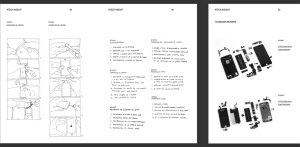
Extracts from the fanzine “Online Scouting”, Mobile Repair Culture project, HEAD – Genève, HES-SO, 2017-2019.
The freedom offered by self-publishing allows more experimentation in a research process that is often protocol based. By bringing together previously disparate research fragments, the production of a fanzine produces new forms of classification and hierarchization of data. This form of research through creation allows both intellectual and creative juggling through all the decisions to be made, which range from arrangement to visual layout, printing and binding. During the production of a fanzine on technical gestures, I compiled a lexicon of repair gestures based on a research made with drawings. The editorial work was developed in dialogue with the field since it was conducted during the same period. The back and forth between the production of data in situ and the work in the office thus resulted in a process that mirrored the observed technical phenomenon, which takes us to Ingold’s anthropology of doing (2013) or potentially constitutes a variant of it (Nova 2019).
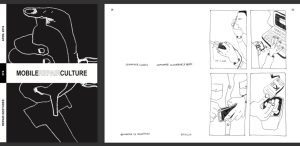
Extracts from the fanzine “Repair Gestures”. Mobile Repair Culture project, HEAD – Genève, HES-SO, 2017-2019.
The use of different modes of writing facilitates the deployment of different modes of thinking and reflection, paving the way for a constant shift of knowledge as it is translated into other forms of writing. This back and forth in the research material can help trace invisible links and foster complex and conceptual reflections. The choice of this format thus produces singular and unexpected forms of analysis through a comparison between the documents produced. It also induces a diversity of representations of technical actions.
In 2020, we embarked on a collaboration with two researchers involved in the REPAIR project at the University of Luxembourg to produce two parallel fanzines, one for each researcher’s sub-project. The first explores the topic of repair practices and opportunities in Esch-sur-Alzette, while the second examines the complexity of maintaining and repairing large technical communication infrastructures by looking at the telephone system in Luxembourg. Collaboration is always an important tool in seeing any given phenomenon from a shifted perspective. Working with different researchers gave us the opportunity to see the same topic through the lenses of various disciplines and also challenged the research by adding an artistic viewpoint.
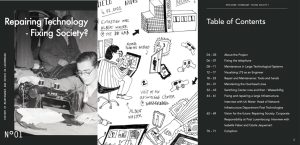
Extracts from the fanzine “Repairing Technology – Fixing Society”, Luxembourg Centre for Contemporary and Digital History (C²DH), University of Luxembourg.
The second fanzine, produced over a short period of time, captures a specific moment in the research process. It served as a collaborative tool between us. The fanzine was produced alongside the investigative process, with each researcher finding her role in the task of interpreting the research results. The subject expert indicated what she found interesting and wished to capture in the fanzine, and I then transcribed these elements in a visual language of my own. My anthropological viewpoint raises new questions in turn. The learning experience provided a great deal of useful contextual and experiential knowledge. The goal of these sessions was to learn “with” the material ecosystem of interest (Ingold 2013) and to incorporate it directly into the final object.
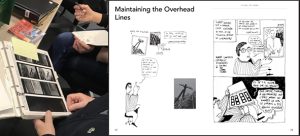
Production of the second repair fanzine, University of Luxembourg.
The production of intermediate objects during the investigative process can also be satisfying in the framework of a long-term research project. While the production of an academic text is a long and laborious process which only shows results once it is finished, it seems important to imagine modes of restitution that make certain aspects of the research process visible along the way. These publications also trigger opinions from those to whom we present the printed mock-ups, which can then be incorporated. As discussed by Tondeur (2018), researchers are constantly testing their interpretations by seeking ways to replay them to their informants. This editorial mode is accessible to third parties involved in the project, who might discuss and comment on the printed object. This process can be compared to the method of self-confrontation: presenting the observed person with obvious expressions of their behavior and asking them to comment on them (Theureau 1997). Since participant observation is only possible through the construction of a relationship of trust, fanzines can also play an important part in creating a link with informants and can be offered as a gift in return for their willingness to lend their time to the research process.
Despite all the advantages outlined in this article, publishing fanzines has certain limitations that need to be mentioned. First, the creative process requires specific skills that cannot be improvised. While I have described the potential of a quick and easy design process, the creative and production stages can also be time consuming. Second, when working with several people, editing and modifications can be complex. Finally, because of its unique character the result produced is difficult to compare with other formats, whereas academia tends to develop forms of restitution which are comparable and can enter into dialogue with each other. It would therefore be interesting to extend these considerations further and continue discussing the academic qualities of this type of restitution.